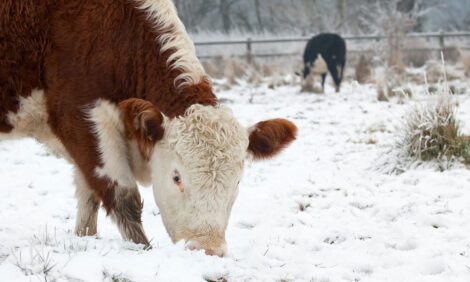



June '07 Cattle Prices
By Brian Roe, Associate Professor AED Economics, Ohio State University.So you just placed some 600-pound feeder cattle onto your feedlot and trying to decide whether to lock in recent June futures market prices, which have been trading around $86. The basis has been favorable in recent years, with cash prices averaging about $1 higher than futures market prices. If the average occurred this year, that paints a potential cash price of around $87 for next June.
The last time cash cattle prices in June averaged more than $87 was also the ONLY time that cash cattle prices in June have ever averaged more than $87 - during 2004. Recall, that was during the height of the Atkins craze, and cash prices averaged around $89. During 2005 and 2006 average cash prices were around $83 and $81, respectively.
So, why is the market offering prices that are $4 to $6 stronger than the last two years? Is it because there will be fewer cattle coming to market next June than during the past 2 years? Well, the USDA estimates that U.S. will produce about 1.5% more beef during the 2nd quarter of 2007 than it did during the same period in 2006. Feed prices have dramatically risen since USDA's last projections, and these higher feed prices should reduce beef supplies next June in a couple of ways.
First, it will likely decrease the average weight of cattle coming off feedlots next spring, which will reduce overall beef supplies. Second, it will likely mean that cattle will spend fewer total days on the feedlot, which could affect the timing of cattle sales. This is particularly important as the number of lightweight feeder cattle (less than 600 pounds) placed on feed during July, August and September was up 29% compared to the previous year. Higher feed prices could mean that this clump of light cattle will come to market largely before June, meaning all of USDA's projected increase in supply could be bunched during the earlier months of the quarter.
So, for the sake of argument, let's suppose June 2007 supplies will be similar to last year rather than 1.5% higher. Last year's price was still $4 lower than what the futures market is projecting today. Can demand alone be enough of a driver to support a $4 increase in June prices? Domestic demand for beef has softened by about 5% so far this year, though demand for cattle has strengthened by about 3%. This means that processors are feeling pinched as they must bid high to fill the slaughter house but face weaker demand from retail customers. Indeed, in response to this type of pinch, Tyson, Swift and others recently reduced cattle slaughter hours in order to control their bidding in cash cattle markets. It is hard to see cattle demand continuing to appreciate in the face of softening retail demand and being the source of the $4 premium over 2006.
This puts the onus on foreign demand. The resumption of trade with Japan has progressed slowly, with August exports well short of the volume achieved after the initial re-opening last December and January. South Korean trade has stalled as U.S. exporters are not entirely clear what degree of imperfection in the product might spark a re-closure of the Korean market to U.S. beef. USDA has second projected quarter exports in 2007 to be up only 16% compared to 2006. This is equivalent to maintaining our exports with all our existing trading partners plus having current trade levels with Japan triple and having trade with South Korea increase to the level of trade we currently have with Japan.
In short, I think slow, steady demand improvements from Japan and South Korea may deliver June prices around $84 or $85, but we would need more rapid market share recovery in these countries to get us to the prices currently trading on the CME. Interestingly, while the June contract appears optimistic about demand, the August contract, which has been trading around $85, appears pessimistic about demand when one goes through the same exercise as I have conducted for the June contract above.
Livestock Revenue Protection contracts, available from many crop insurance agents, do offer some downside price protection. A price floor of $80.65 can be purchased for $2.90 per hundredweight of cattle to be marketed, providing an effective price floor just under $78. This is not a great deal because the insurance premiums for these contracts are driven by the options market for CME cattle contracts, and the price of options are quite high because there is so much uncertainty concerning next June's prices. However, for the risk averse, there may be other combinations of CME futures and options (e.g., sell a futures contract and buying a higher-priced call option) that could lock in a range of prices without such a high premium.
TheBeefSite.com News Desk

